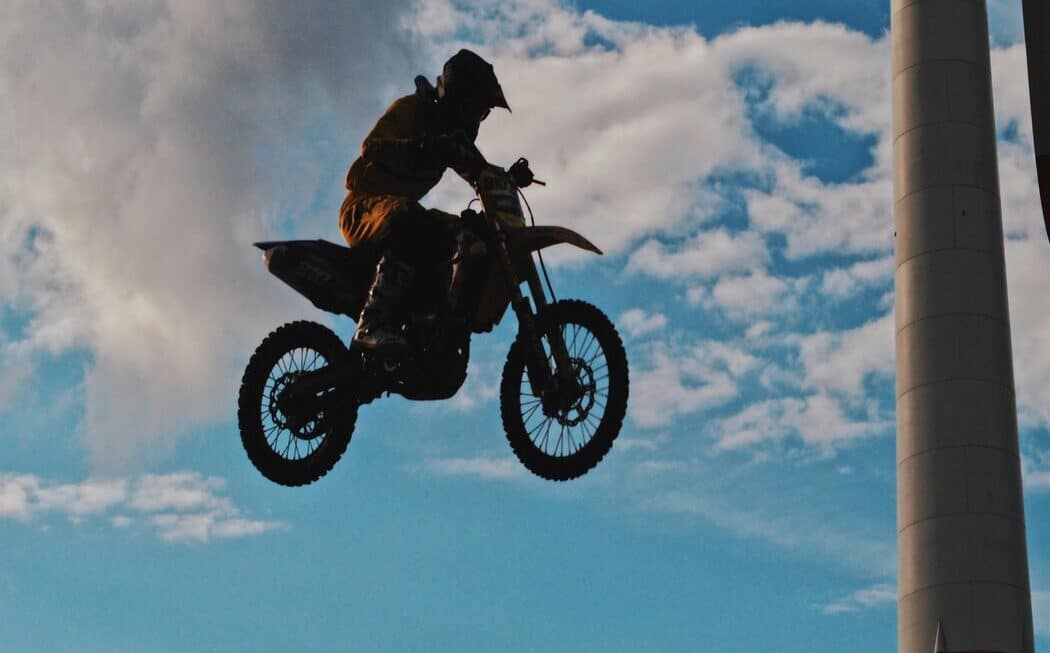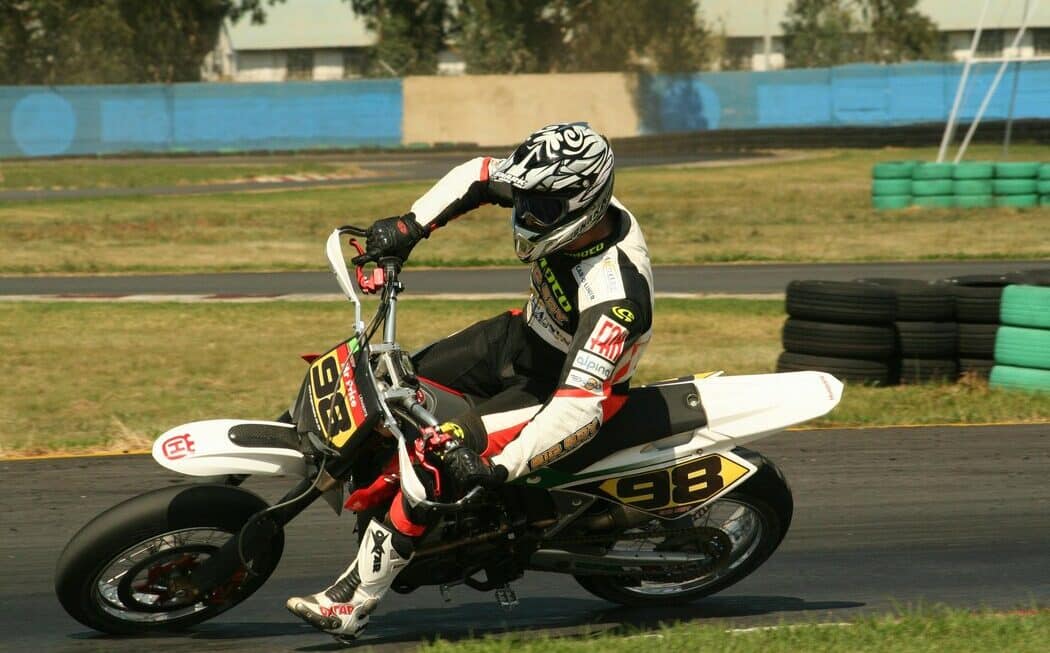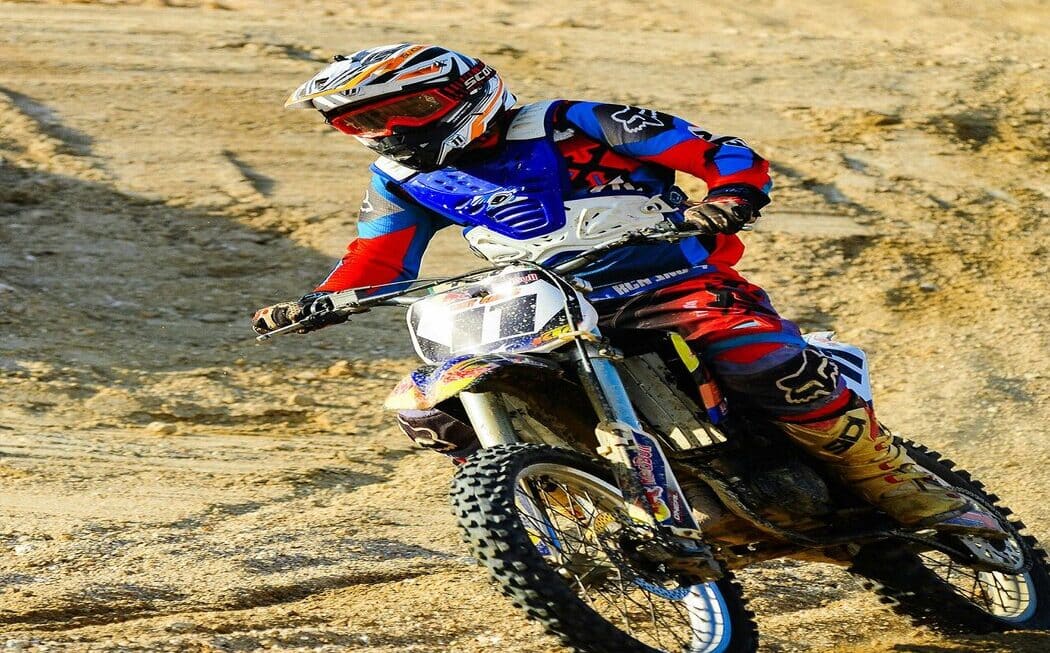Dirt bike riding can seem like it’s all fun and games, but like any extreme sport, there are risks involved. Whether you want to get into this sport as a hobby or you plan to ride competitively, taking the time to learn the dirt bike riding techniques, is essential for making sure your ride is safe and enjoyable. While some choose to seek out professional instructions, there are plenty of tips and techniques available for learning the basics on your own. Riding a dirt bike may be somehow risky, but to avoid accidents or injuries you should learn some basic techniques. Whether you are a beginner or an expert, these tips and techniques will help you a lot to improve your riding skills.
Dirt Bike Riding Techniques
These are the top dirt bike riding techniques:
Body Position
Correct body position is the most important aspect of riding a dirt bike since it can influence your speed, control, and safety while on the trail or track. It is more than just standing or sitting; usually, a combination of both stances is necessary. You need to consider where your feet go on the foot pegs, how and where you grip your knees. Also, pay attention to your arms, fingers, and back posture for an optimal body position while riding a dirt bike.
The most common and effective way to ride a dirt bike is in the standing position. This stance allows you to control your bike more efficiently by providing greater mobility due to leverage at various pivot points around the frame. It takes full advantage of any bumps or uneven terrain with an extra layer of responsiveness not offered by a seated position.
Managing the Throttle
When you are first starting to ride a dirt bike, the most difficult thing to get accustomed to is learning how to properly use the throttle. You must take your time and increase the throttle gradually when starting, as too much can be dangerous and could lead to accidents. When accelerating the bike, you will need to hold down the clutch lever while simultaneously opening up the throttle a little bit at a time until it reaches its fully open position. After this, you will need to let go of the clutch slowly and steadily while continuing to give your bike more gas. Mastering this technique requires patience and practice but it’s essential if you want control over your ride.
In addition, giving too much throttle can result in an uncontrolled acceleration and you may end up losing control of your vehicle. To avoid this issue, start with lower RPM settings or shorter gears until you develop enough technical ability to handle higher speeds safely. Once you are confident enough with controlling the level of torque produced by your motorcycle, then you can slowly increase power output with prudence and balance it out with proper steering control techniques as required by every situation on the road.
Clutch Control
When riding a dirt bike, it is important to know when to use the clutch and when not to use it. The clutch should never be used for down-shifting on a dirt bike like it would be in a car. Many riders try to downshift while entering into a turn, but using the clutch will disrupt an otherwise smooth run. It is better to just use your brakes and find out how little braking you need to slow down when entering turns.
It is also useful for saving brake pads from unnecessary wear and tear by relying heavily on the clutch instead of the brakes. Knowing what kind of braking force you need will keep up your pace as you go around each corner and help you hit every line perfectly without having to slow down too much on each turn. Doing this also reduces the amount of physical effort required over longer rides; combined with improved accuracy, it can improve overall performance significantly.
Steering the Bike
Steering the bike is a critical skill that must be learned to navigate safely through off-road terrain. As you prepare to turn the corner, your balance needs to shift towards the fuel tank, keeping your elbows raised high for better control. This slight forward leaning of your body will make it easier to maneuver and will help stabilize the bike when making the turn. Additionally, in some cases, you might choose to sit down as you enter the corner. This increases pressure on the back wheel, helping maintain traction during sharp turns as well as providing an even weight distribution for greater control when banking or traversing rough patches.
When starting out make sure to practice in an open space with no obstacles where you can practice different speeds at calculating angles until you are comfortable enough with your skills and knowledge of traction limits so that you can handle yourself confidently on any given path.
Braking
Braking can be an important skill to master when it comes to dirt biking. In general, dirt bikes have two brakes, each serving its purpose. The front brake is the more powerful of the two brakes and is used as the primary stopping force. Squeezing the right handlebar lever will activate the front brake, providing a strong braking force that will slow down the bike. To apply additional braking sound, a foot brake can be activated by pressing on the rear brake pedal with your foot. The foot brake adds an extra layer of slowing power, allowing riders to control their speed more precisely.
Feet Use
Using your feet when you ride a bike is an important skill that should not be overlooked. Good form can help you improve your balance and prevent injuries by keeping your joints healthy. For example, when cornering, riders are often trained to lower their foot like a landing gear as they round the corner. While this may seem counter-intuitive to most people, it helps by distributing some of your body weight down towards the ground while allowing the rest of your body to remain balanced and steady as you turn. This technique must be learned with patience, practice, and skill to prevent serious knee injuries from occurring.
In addition to using your feet for balance during turns, dropping your foot can also be used when riding in a straight line. This will help keep you steady whatever the terrain might be throwing at you while avoiding fatigue or overworking any one muscle group in your body for too long. The trick here is to keep the leg straight out with the toes pointed up so that it does not catch on something or destabilize your balance unintentionally. Learning how and when to correctly employ this technique will teach crucial skills that all cyclists ought to have under their belt!
Changing Gears
Changing gears is an essential skill for any rider to master, and it can take some time to become comfortable with the process. The first step is to bring in the clutch with your left hand while simultaneously winding off the throttle with your right hand. This disconnects the engine from the transmission and allows you to change gears without having to re-match. Then, use your left foot to move the gear shifter up or down as required; this will enable you to select a different speed or terrain that best suits your ride. Finally, release the clutch quickly but smoothly to connect power from the engine through to the rear wheel again.
Once you get used to changing gears this way it can become second nature. This is especially important if you’re riding on twisty roads, where keeping a healthy amount of momentum at all times will help keep you safe during turns as well as help prevent stalling out on hills or during cornering. While spending some time practicing might take away from other things you could be doing, mastering this skill will only make you a better rider overall in terms of confidence, safety, and convenience when out on journeys near or far.
Practice
Practice is an essential part of mastering any skill, whether it’s riding a bicycle or playing a musical instrument. Taking the time to practice consistently enables you to focus and refine your technique so that you can eventually do something naturally and without thinking about it. That said, it’s important to recognize that no matter how much you practice, any skill takes time and dedication to become a habit.
It’s also important to not get discouraged when things don’t work out right away – even pros need to continually practice their skills if they want to stay at the top of their game. This includes everything from developing proper body position while riding to using precise clutch and brake control as well as using their feet correctly regardless of the situation. With enough patience, hard work, and consistent practice all riders can make significant progress with their abilities over time.
Conclusion
Riding a dirt bike is no easy task. It is a challenging and rewarding journey that can leave you bruised and battered. There are many setbacks that you may face along the way such as falls, technical difficulties, lack of confidence, and more. But at the same time, it’s an extraordinary experience like no other. Nothing beats the feeling of racing around the track as if you’re flying through the air with the wind blowing through your hair.
No matter what skill level or riding experience you have, improving your riding performance comes down to one key factor: practice. Spend some quality time to learn more dirt bike riding techniques. Focus on all aspects of dirt biking; from maintaining proper balance in turns to learning how to properly engage your brakes when speeding up or slowing down. Every session should be approached with focus and dedication to ensure safe and consistent progress for each ride out there. In conclusion, pay attention to safety tips, always practice, and have fun on any terrain!



